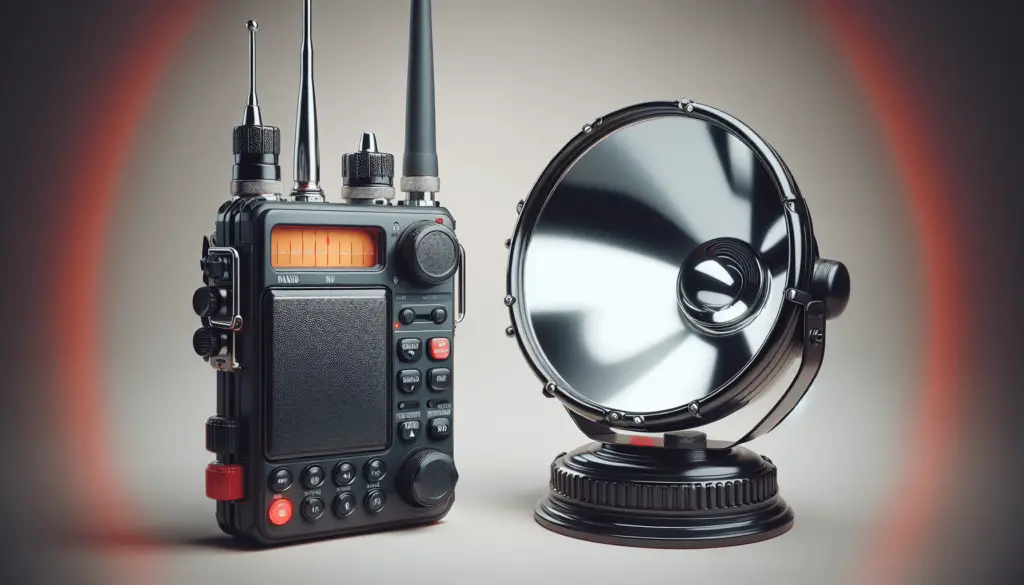Are you prepared for an emergency?
When disaster strikes, communication is essential. Whether you’re an avid hiker or just want to be prepared for any emergency situation, having the right signal and communication devices can make all the difference. In this guide, we will walk you through everything you need to know about emergency signal and communication devices for preppers.

Understanding the importance of emergency communication
In times of crisis, communication can be a matter of life and death. Reliable communication enables you to call for help, locate loved ones, and receive critical information. Having the right communication devices can ensure that you stay connected with the outside world, even when traditional means of communication are unavailable.
The must-have emergency signal and communication devices
Cell phones
Cell phones are the most common form of communication for many people, but they may not always be reliable during emergencies. Make sure to have a fully charged cell phone with a backup power source, such as a portable charger. Consider storing important numbers, like emergency contacts and local authorities, in your phone.
Two-way radios
Two-way radios are a valuable communication tool, especially when cell phone networks are down. They allow you to communicate with others in your group or community over short distances. Make sure to have a set of two-way radios with extra batteries in your emergency kit.
Signal flares
Signal flares are essential for signaling distress when stranded or lost. They emit a bright light that can be seen from a distance, alerting rescuers to your location. Keep a few signal flares in your emergency kit, along with instructions on how to use them safely.
Whistles
Whistles are a simple yet effective way to signal for help in an emergency. Keep a loud whistle on your person at all times, as it can be heard over long distances. Three short blasts on a whistle is a universal distress signal.

Choosing the right devices for your needs
Consider your environment
When choosing emergency signal and communication devices, consider the environment in which you will be using them. For example, if you live in a rural area with poor cell phone reception, investing in a satellite phone may be a better option.
Durability and reliability
Emergency situations can be unpredictable, so it’s important to choose devices that are durable and reliable. Look for devices that are waterproof, shockproof, and can withstand extreme temperatures.
Ease of use
During an emergency, you may not have time to figure out complicated devices. Choose devices that are easy to use and understand, even under stressful conditions. Practice using your devices regularly so that you are familiar with their operation.
Tools for long-term survival situations
Ham radios
Ham radios, also known as amateur radios, are a popular choice for preppers looking for long-term communication solutions. They operate on a range of frequencies and can reach across vast distances. Obtaining a ham radio license allows you to communicate with other ham radio operators in times of need.
Satellite phones
Satellite phones are a reliable communication option when traditional networks are down. They use satellites to transmit signals, allowing you to make calls from anywhere in the world. While satellite phones can be expensive, they are a valuable investment for those who venture off the grid frequently.
Emergency beacons
Emergency beacons, such as Personal Locator Beacons (PLBs) and Emergency Position Indicating Radio Beacons (EPIRBs), are designed to send distress signals to search and rescue authorities. These devices can pinpoint your location with GPS coordinates, making it easier for rescuers to find you.
Maintaining and testing your devices
Regular maintenance
Proper maintenance is essential to ensure that your emergency signal and communication devices are in working order when you need them. Regularly inspect your devices for damage, replace old batteries, and keep them clean and dry. Store your devices in a safe, easily accessible location.
Testing your devices
Testing your devices regularly is crucial to ensure that they are functioning correctly. Make a habit of testing each device in your emergency kit at least once a month. Check the battery life, signal strength, and overall performance of each device to identify any issues early on.
Conclusion
Being prepared for emergencies means having the right tools to communicate and signal for help when needed. By investing in reliable emergency signal and communication devices, you can increase your chances of survival and stay connected with others during a crisis. Remember to choose devices that suit your needs, practice using them regularly, and maintain them properly to ensure they are ready when you need them most. Stay safe and be prepared for any situation that comes your way.
